
Kep Province: Cambodia's Coastal Jewel
Discover Kep Province, Cambodia's serene coastal gem, offering tranquil beaches, lush national parks, fresh seafood, and rich colonial history.
Nestled along Cambodia's southern coast, Kep Province is a serene escape from the bustling cities. Known for its tranquil beaches, lush national parks, and charming colonial history, Kep offers a unique blend of natural beauty and cultural heritage. Kep Beach, with its calm waters and warm sand, is the perfect spot for relaxation. Just a short distance away, Kep National Park invites visitors to explore its scenic trails, where you can encounter diverse wildlife and enjoy panoramic views of the coastline. The province is also famous for its fresh seafood, especially the renowned Kep crab. At the bustling Crab Market, you can taste this local delicacy prepared in various mouth-watering ways. For a touch of history, visit the abandoned French villas that whisper tales of a bygone era, or take a boat trip to Rabbit Island for a day of adventure and discovery. Whether you're seeking relaxation, adventure, or cultural insights, Kep Province promises an unforgettable experience in the heart of Cambodia's natural splendor.
Local tips in Kep Province
- Visit during the dry season from November to May for the best weather.
- Rent a motorbike to explore the area conveniently and at your own pace.
- Try the famous Kep crab at the Crab Market for an authentic local dining experience.
- Wear comfortable shoes for hiking in Kep National Park.
- Bring cash as many local vendors do not accept credit cards.
Kep Province: Cambodia's Coastal Jewel
Nestled along Cambodia's southern coast, Kep Province is a serene escape from the bustling cities. Known for its tranquil beaches, lush national parks, and charming colonial history, Kep offers a unique blend of natural beauty and cultural heritage. Kep Beach, with its calm waters and warm sand, is the perfect spot for relaxation. Just a short distance away, Kep National Park invites visitors to explore its scenic trails, where you can encounter diverse wildlife and enjoy panoramic views of the coastline. The province is also famous for its fresh seafood, especially the renowned Kep crab. At the bustling Crab Market, you can taste this local delicacy prepared in various mouth-watering ways. For a touch of history, visit the abandoned French villas that whisper tales of a bygone era, or take a boat trip to Rabbit Island for a day of adventure and discovery. Whether you're seeking relaxation, adventure, or cultural insights, Kep Province promises an unforgettable experience in the heart of Cambodia's natural splendor.
When is the best time to go to Kep Province?
Iconic landmarks you can’t miss
Kep Crab Market
Discover the freshest seafood at Kep Crab Market, a vibrant culinary hub on Cambodia's coast, offering an authentic taste of local culture and cuisine.
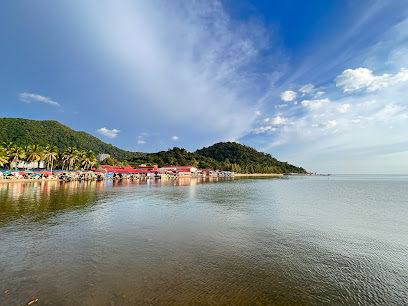
Krung Kep Blue Swimmer Crab Statue
Experience the vibrant essence of Cambodia at the Krung Kep Blue Swimmer Crab Statue, a symbol of coastal culture and natural beauty.
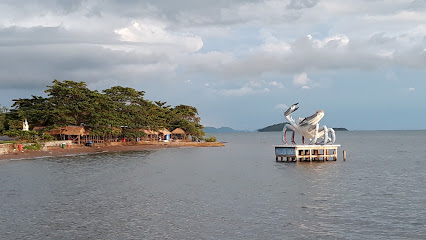
White Lady Statue
Discover the charm of the White Lady Statue in Krong Kaeb, a historical landmark rich with cultural significance and picturesque surroundings.
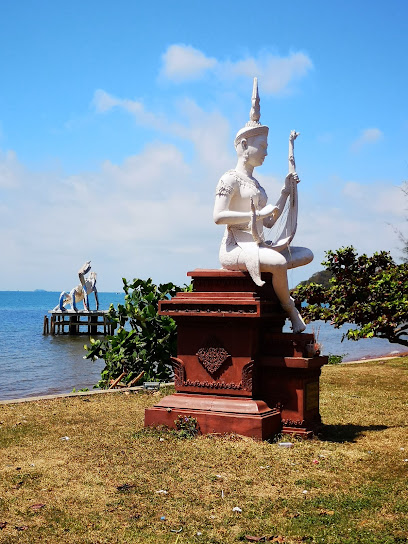
Kep Beach
Discover the tranquil beauty of Kep Beach, a coastal paradise in Cambodia known for its stunning views, fresh seafood, and relaxing atmosphere.
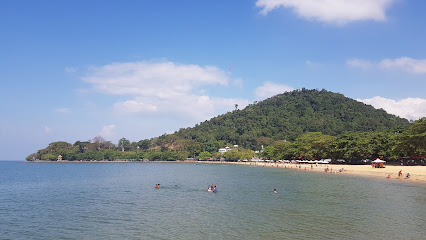
Kep City
Explore the serene beauty of Kep City, Cambodia – a coastal paradise known for its stunning beaches, fresh seafood, and vibrant local culture.
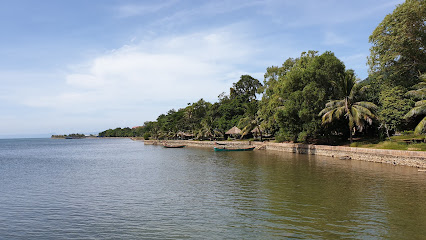
Kep National Park
Experience the serene beauty of Kep National Park, a natural haven offering lush landscapes, diverse wildlife, and stunning coastal views in Cambodia.
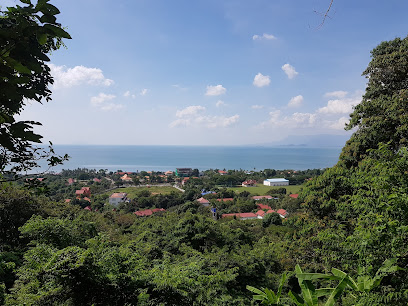
Knai Bang Chatt Resort in Kep
Discover the serene beauty of Knai Bang Chatt Resort in Kep, where luxury meets the stunning coast of Cambodia for an unforgettable getaway.

ឆ្នេរអង្កោល - Angkol beach
Discover the serene beauty of Angkol Beach, a hidden coastal paradise in Cambodia perfect for relaxation and adventure.

Wat Samathi Pagoda
Discover tranquility and stunning views at Wat Samathi Pagoda in Krong Kaeb, a must-visit Buddhist temple for cultural exploration.

Pantai Kep
Experience the serene beauty of Kep Beach, a hidden gem in Cambodia perfect for relaxation, exploration, and unforgettable sunsets.
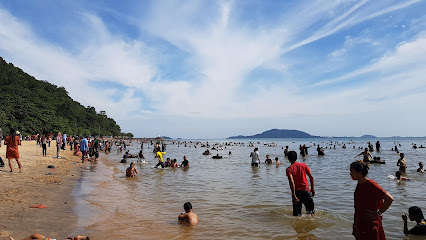
King Sihanouk's Seaside Palace
Explore the historical significance and breathtaking beauty of King Sihanouk's Seaside Palace in Krong Kaeb, Cambodia's coastal treasure.
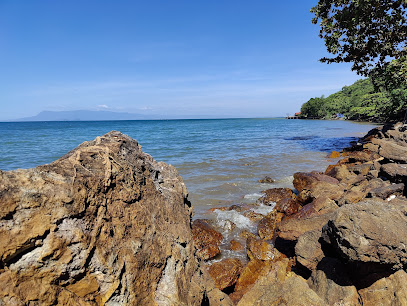
Khmer House Bangalow
Discover comfort and local charm at Khmer House Bangalow in Kep Province, where traditional hospitality meets modern convenience for a unique travel experience.
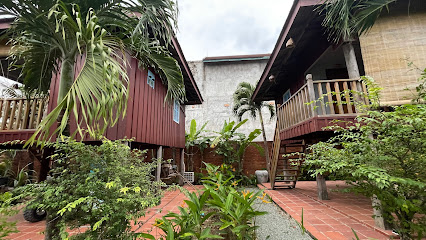
ផ្លូវថ្មីកាត់ទៅកែប
Experience the serene beauty and rich heritage of Kampot, a riverside gem in Cambodia, perfect for adventure seekers and culture enthusiasts alike.
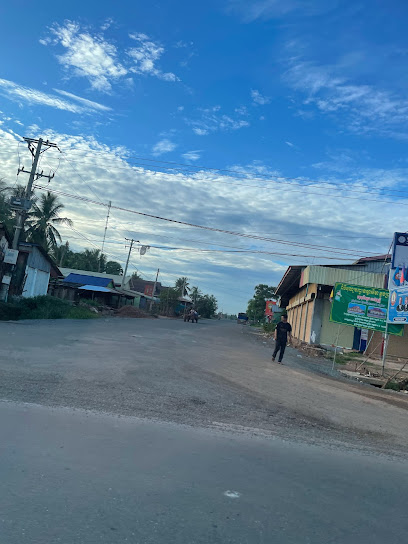
Kep Butterfly Garden
Discover the enchanting Kep Butterfly Garden in Krong Kaeb, where nature's beauty and vibrant butterflies come together for an unforgettable experience.
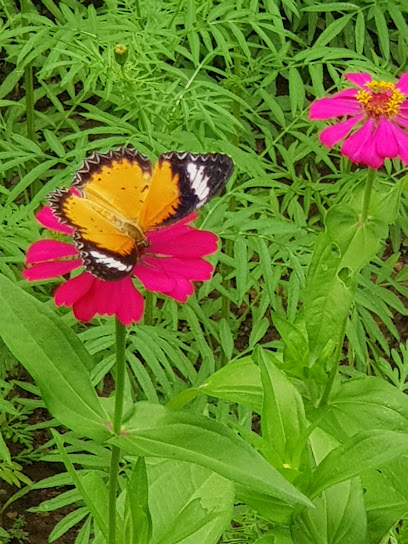
O'Krosar Community
Discover the vibrant O'Krosar Community in Krong Kaeb, where local culture, delicious food, and traditional crafts come together for an unforgettable experience.
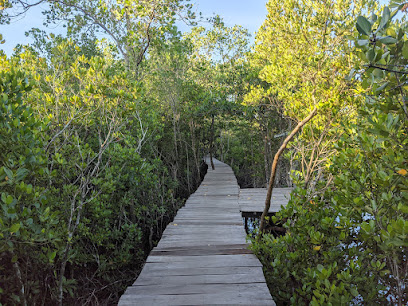
Unmissable attractions to see
White Lady Statue
Explore the mystical allure of the White Lady Statue in Krong Kaeb, a historical landmark that embodies Cambodia's rich cultural heritage.
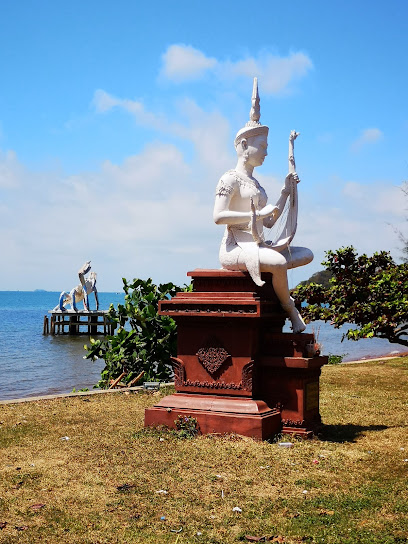
Phnom Chhngok Cave
Explore the enchanting Phnom Chhngok Cave, a blend of natural beauty and ancient worship in Cambodia's scenic landscape.
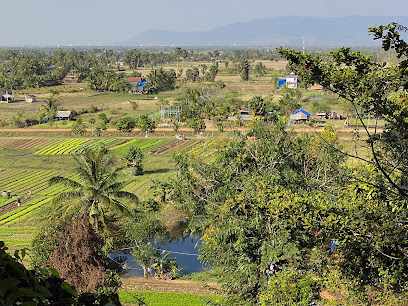
Thom Beach Bar
Experience the ultimate tropical getaway at Thom Beach Bar in Phu Quoc, where stunning ocean views meet delicious cuisine and warm hospitality.
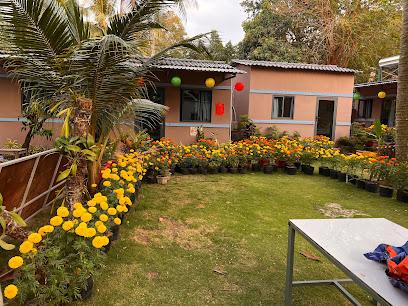
Trapeang Sangkae Mangrove forest
Explore the serene beauty of Trapeang Sangkae Mangrove Forest in Kampot, a sanctuary for wildlife and nature lovers alike.
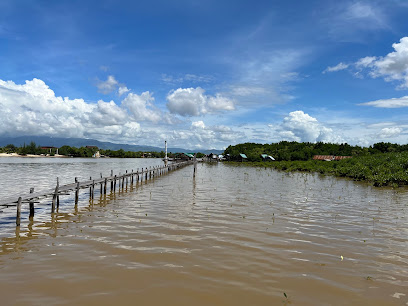
Coconut Beach
Experience the tranquility of Coconut Beach in Krong Kampot, a perfect destination for relaxation, stunning sunsets, and local cuisine.
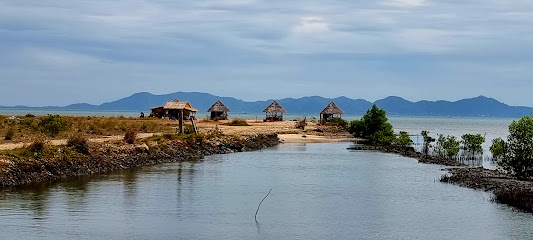
Wat Samathi Pagoda
Explore the serene beauty of Wat Samathi Pagoda, a stunning Buddhist temple in Krong Kaeb, Cambodia, known for its intricate architecture and tranquil atmosphere.
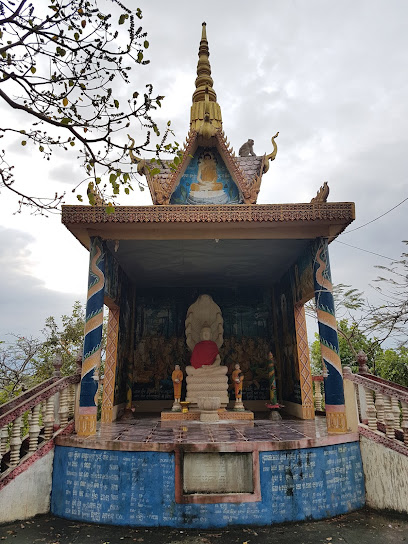
Seahorse
Explore the natural beauty and vibrant culture of Seahorse in Kampot, a must-visit tourist attraction in Cambodia.
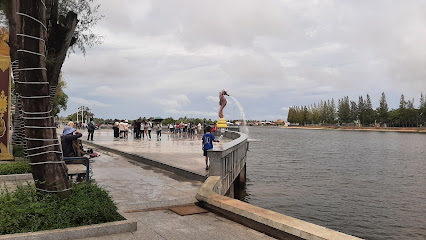
Pantai Kep
Explore the tranquility of Pantai Kep, a stunning beach destination in Cambodia, offering serene waters, vibrant culture, and breathtaking sunsets.
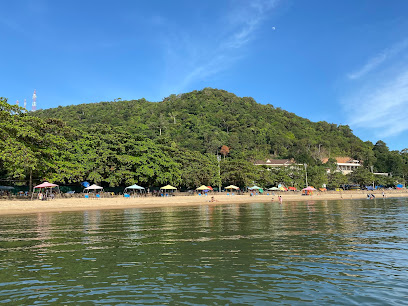
Phnom Kbal Romeas
Explore Phnom Kbal Romeas, an archaeological treasure in Cambodia that showcases ancient history amidst stunning landscapes.
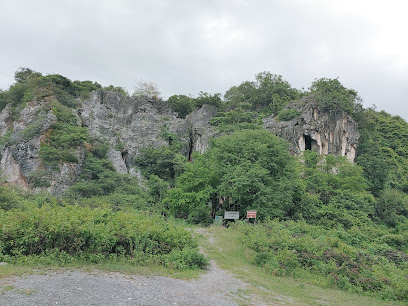
KAYAK & CO
Discover the beauty of Village 070215 through unique kayaking adventures at Kayak & Co, where nature and adventure unite.

SILA JAM Pdey
Experience the serene beauty and rich culture of Sila Jam Pdey, a hidden gem in Krong Kaeb, Cambodia.
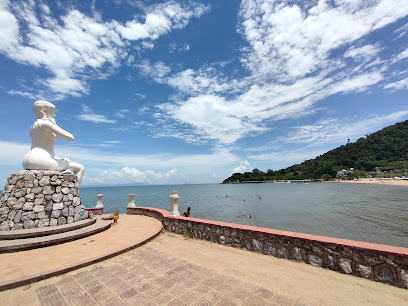
Kep Butterfly Garden
Explore the stunning Kep Butterfly Garden in Krong Kaeb, where vibrant butterflies and lush flora create a serene escape into nature's beauty.
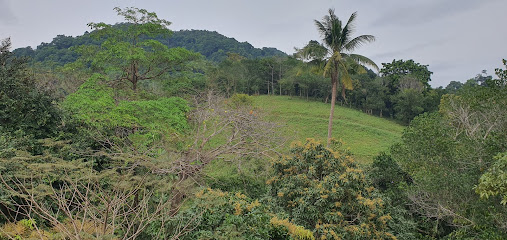
Green Cathedral
Discover the Green Cathedral in Krong Kampot, a stunning natural haven of towering trees and tranquility, perfect for nature lovers and peace seekers.
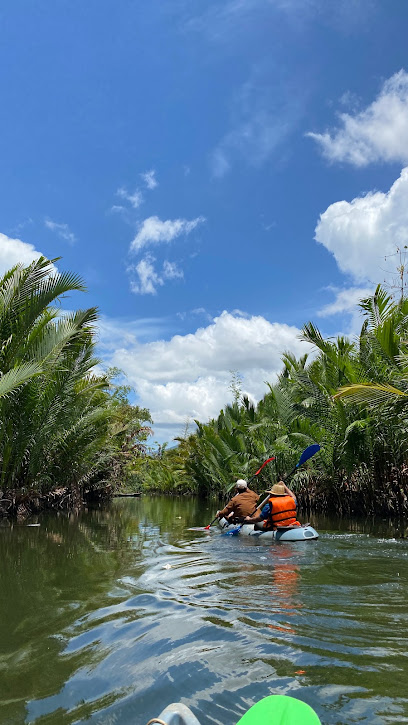
Kampot tuktuk guide (countryside/salt lakes/pepper farm/kep…)
Experience the enchanting landscapes of Kampot, featuring scenic countryside, salt lakes, and famous pepper farms, all accessible by tuktuk.

Landscape Tower
Explore the breathtaking views and cultural richness of the Landscape Tower in Krong Kaeb, a top tourist attraction in Cambodia.
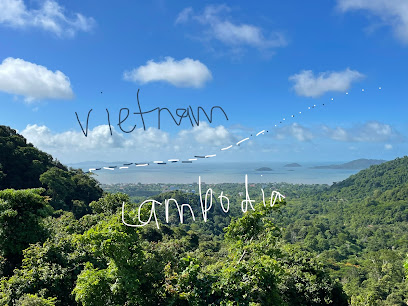
Essential places to dine
Kimly Seafood Restaurant
Experience authentic Cambodian seafood cuisine at Kimly Seafood Restaurant in Krong Kaeb – a must-visit dining destination for every traveler.
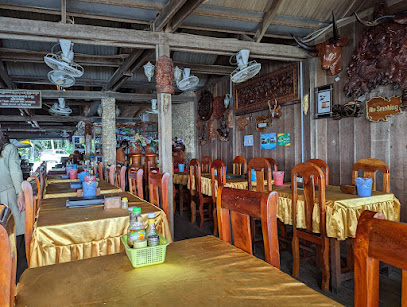
The Sailing Club Restaurant in Kep
Discover exceptional dining at The Sailing Club Restaurant in Kep - where fresh seafood meets breathtaking ocean views.
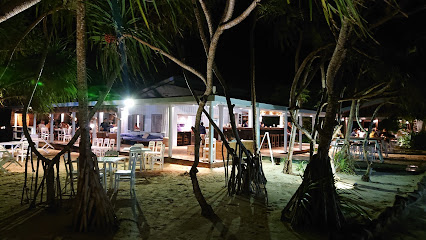
Holy Crab
Experience exquisite seafood dining at Holy Crab in Krong Kaeb - where freshness meets flavor in every bite.

Saravoan Kep Hotel . Restaurant . Bar . Coffee
Discover relaxation at Saravoan Kep Hotel: A coastal haven offering delightful dining experiences and breathtaking views in Krong Kaeb.
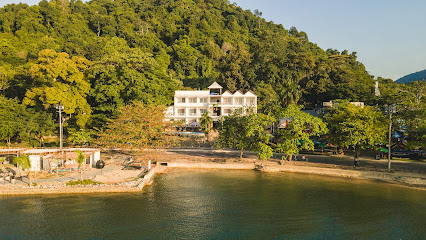
Italian Corner
Experience authentic Italian cuisine at Italian Corner in Krong Kaeb – where flavor meets tradition in a cozy atmosphere.
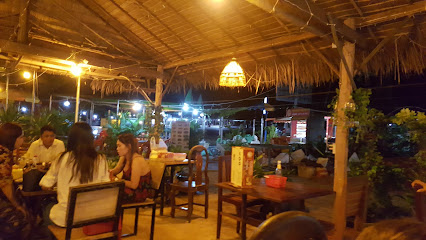
Lakerestaurant
Discover the exquisite flavors at Lakerestaurant by the lake—where every meal is a celebration of local cuisine and stunning views.
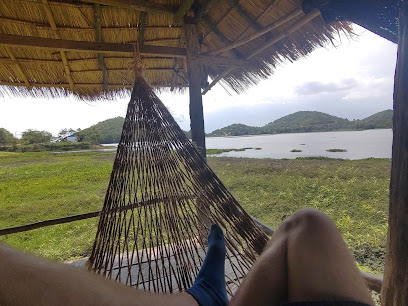
Kep Sur Mer Restaurant
Discover authentic Cambodian seafood at Kep Sur Mer Restaurant in picturesque Kep - where fresh flavors meet stunning coastal views.
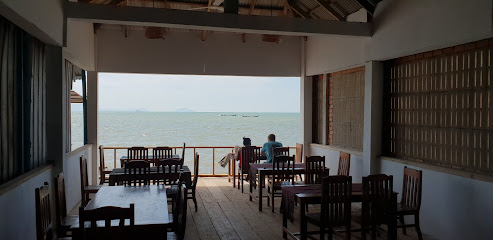
Captain Chims Restaurant
Experience authentic Cambodian cuisine at Captain Chims Restaurant in Krong Kaeb - where fresh ingredients meet traditional flavors.

Arts Cafe
Experience a fusion of art and authentic Khmer cuisine at Arts Cafe with breathtaking waterfront views.
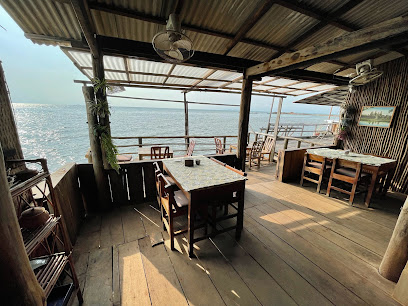
Deli's Kep
Experience culinary bliss at Deli's Kep in Krong Kaeb – a delightful restaurant specializing in bakery and patisserie delicacies.
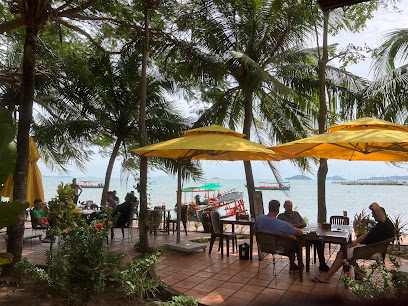
Sabbay Kep
Experience tranquility at Sabbay Kep, where comfort meets culinary excellence amidst Krong Kaeb's breathtaking coastal scenery.

The Wave - Kep West Restaurant in Kep
Experience exceptional cuisine with breathtaking views at The Wave - Kep West Restaurant in Cambodia's scenic coastal town.
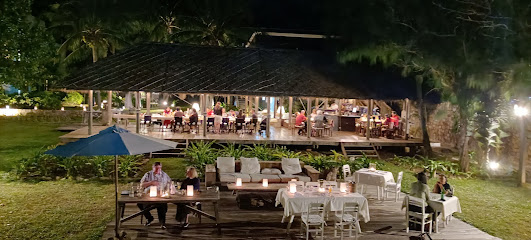
Kep Lodge
Discover tranquility at Kep Lodge—a unique hotel blending Cambodian hospitality with Swiss flavors amidst breathtaking nature.

Martini bar restaurant
Experience authentic Italian cuisine at Martini Bar Restaurant in Phumĭ Chrâk Pôpél—where flavor meets elegance.
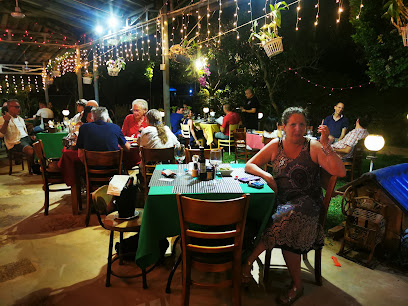
Le bouchon de Kep
Discover Le Bouchon de Kep: A charming bar and restaurant offering exquisite local cuisine and breathtaking beach views in Krong Kaeb, Cambodia.
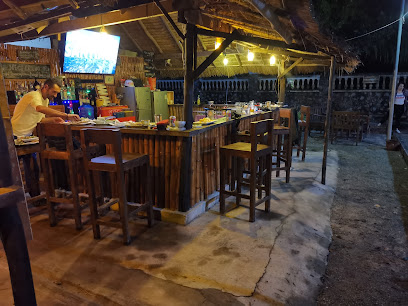
Markets, malls and hidden boutiques
Kep Crab Market
Explore the vibrant Kep Crab Market, a seafood haven where fresh catches meet local culinary delights in a picturesque coastal setting.
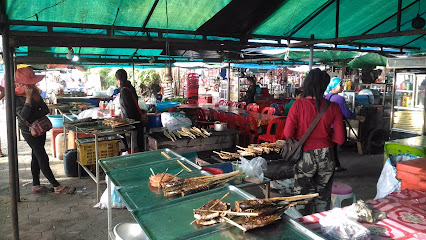
Sothy's Pepper Farm
Experience the rich flavors and sustainable farming practices at Sothy's Pepper Farm in Kampot, Cambodia, a must-visit for food lovers and culture seekers.
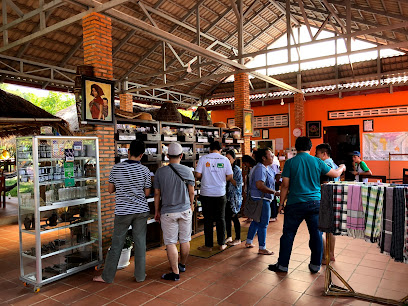
BoTree Farm
Experience the essence of Cambodia at BoTree Farm, where local flavors, fresh produce, and stunning landscapes come together in harmony.
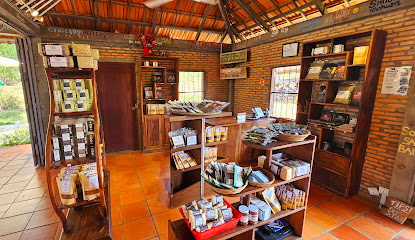
Kep Market
Explore Kep Market: A Local Cambodian Market Offering Fresh Produce, Seafood, and Unique Handicrafts in a Vibrant Atmosphere.
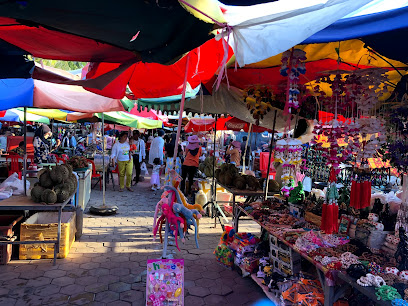
Arts Cafe
Discover the perfect blend of art and cuisine at Arts Cafe in Crab Market, where every dish is a masterpiece waiting to be savored.
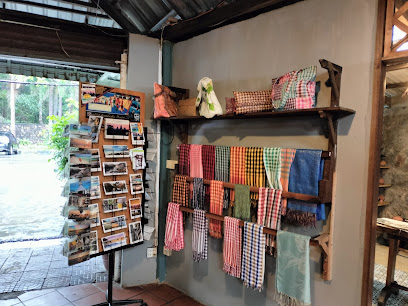
Deli's Kep
Discover the exquisite flavors of Deli's Kep, a restaurant and bakery in Krong Kaeb offering delightful local dishes and heavenly pastries.
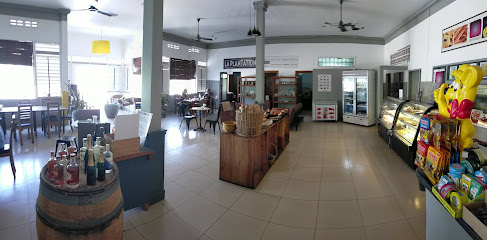
Damnak Chang Eur Market
Discover local culture at Damnak Chang Eur Market in Krong Kaeb, where fresh produce, street food, and crafts come together in a vibrant atmosphere.
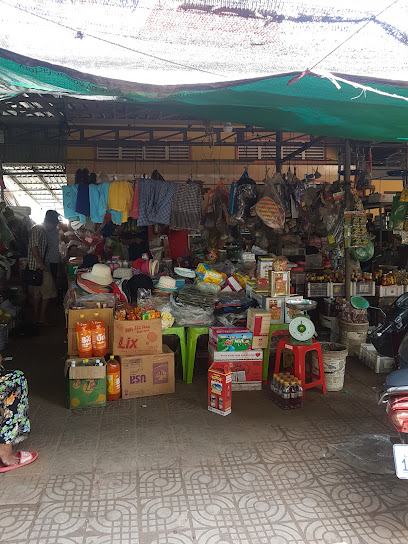
Tiny Kampot Pillows
Experience the unique craftsmanship of Tiny Kampot Pillows in Krong Kampot, where local artistry meets charming souvenirs for every traveler.
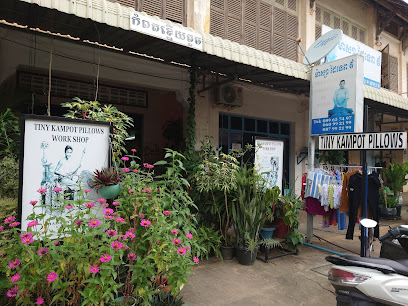
The Kampot Pepper Shop
Explore the heart of Kampot's culinary heritage at The Kampot Pepper Shop, your destination for authentic Kampot pepper and unique souvenirs.
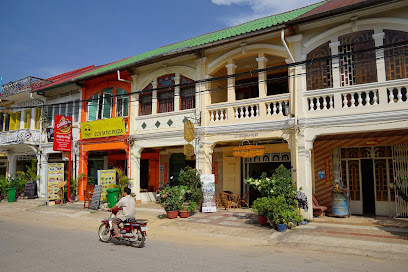
Kampot Souvenirs Kampot Pepper Shop
Discover the essence of Cambodia at Kampot Souvenirs Kampot Pepper Shop, home to the finest Kampot pepper and unique handcrafted souvenirs.
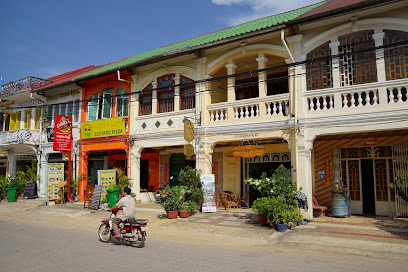
Casa Kep Garden Cafe & Eco BnB
Discover the serene sanctuary of Casa Kep Garden Cafe & Eco BnB, where cozy accommodations meet delightful baked goods in the heart of Krong Kaeb, Cambodia.
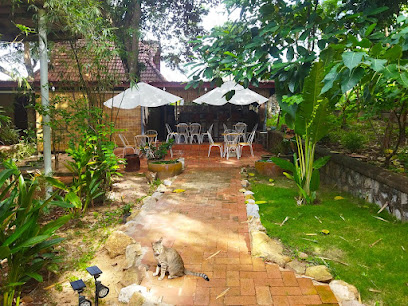
Kep Rope Zip Cafe
Experience the thrill of ziplining above scenic vistas and savor exquisite coffee at Kep Rope Zip Cafe, your perfect getaway in Cambodia.

Mak Pisey Shop
Explore the essence of Cambodia at Mak Pisey Shop, your go-to destination for local crafts, souvenirs, and authentic culture in Krong Kaeb.
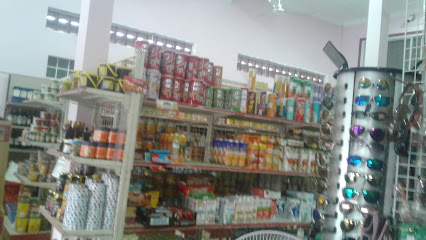
ក្លើកាហ្វេ Klaeur Cafe&Eatery
Discover the warmth of Klaeur Cafe & Eatery in Krong Kaeb, where every sip of coffee and every bite of food tells a story.
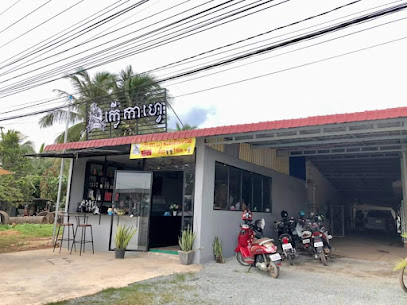
Mart 24H
Experience the convenience of Mart 24H in Kep, your go-to store for snacks, essentials, and local goods available round the clock.
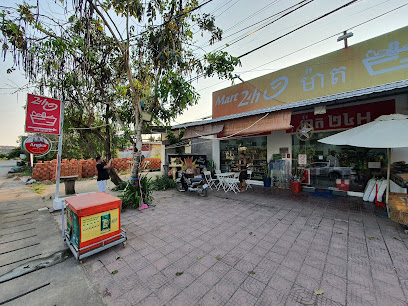
Essential bars & hidden hideouts
The Sailing Club Restaurant in Kep
Discover exquisite dining and stunning ocean views at The Sailing Club Restaurant in Kep, a culinary gem on Cambodia's coast.
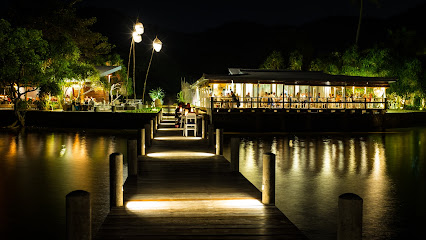
Holy Crab
Discover the ultimate seafood experience at Holy Crab in Krong Kaeb, where freshness meets flavor in a delightful coastal setting.
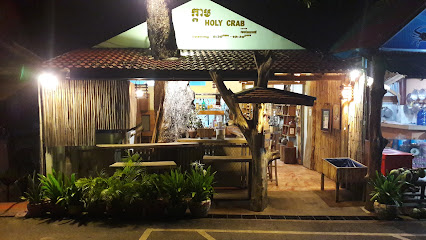
Saravoan Kep Hotel . Restaurant . Bar . Coffee
Experience coastal bliss at Saravoan Kep, where exceptional dining, refreshing drinks, and comfortable accommodations meet the beauty of Cambodia's coastline.
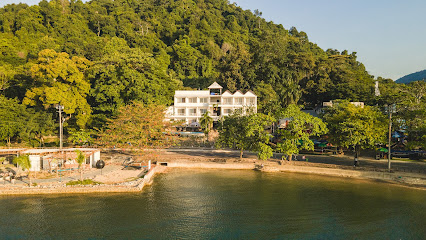
Martini bar restaurant
Indulge in a vibrant culinary experience at Martini Bar Restaurant, where local flavors meet international cuisine in the heart of Krong Kep.
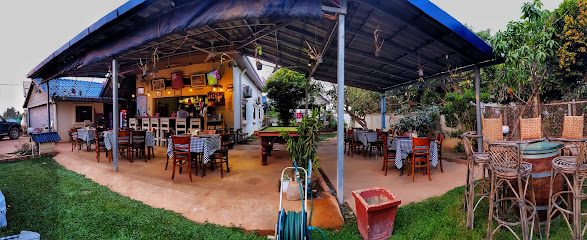
Le bouchon de Kep
Experience the vibrant flavors and stunning beach views at Le Bouchon de Kep, a must-visit bar and restaurant in Krong Kaeb, Cambodia.
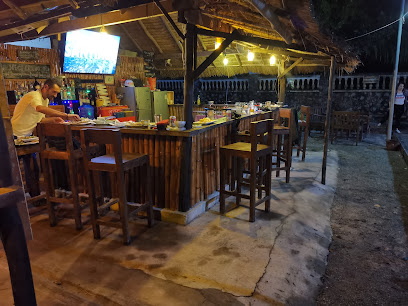
Kep natural restaurant
Discover the vibrant flavors of Cambodia at Kep Natural Restaurant, where fresh seafood meets live music in a stunning coastal setting.

Chankiri Restaurant
Discover the authentic flavors of Cambodia at Chankiri Restaurant in Krong Kaeb, where culinary traditions meet modern dining.
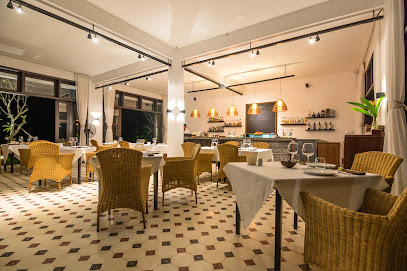
Kep Mountain Lodge
Discover the natural beauty and tranquility of Kep Mountain Lodge, your perfect retreat in Krong Kaeb, Cambodia.

Crazy Good
Experience the best of Krong Kaeb's culinary scene at Crazy Good, where fresh ingredients and vibrant flavors come together.

Cuisine at Coffee & Cocktails (Kep)
Discover the vibrant culinary scene at Cuisine at Coffee & Cocktails, where local flavors meet international favorites in a delightful setting.
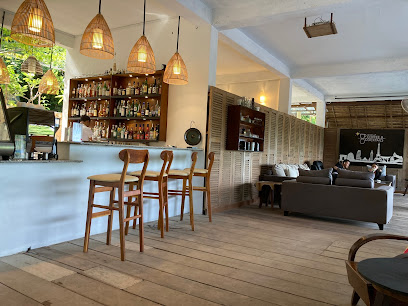
CoolGirl Bar
Experience the vibrant nightlife at CoolGirl Bar in Krong Kampot, where fun, music, and friendly vibes come together for an unforgettable evening.
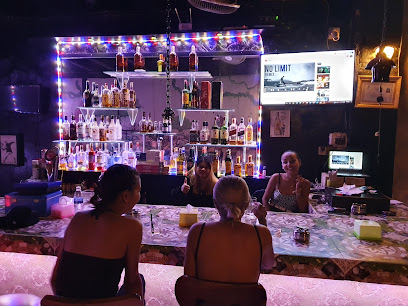
Restaurant Bar de la plage Kep
Discover the taste of Cambodia at Restaurant Bar de la Plage Kep, where beautiful beach views meet delicious seafood and pizza delights.
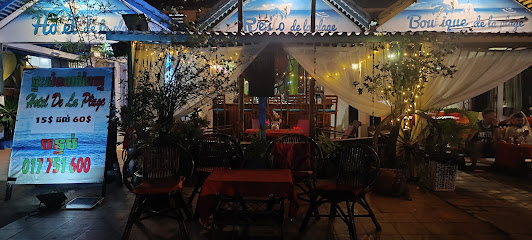
Dara
Discover Dara, a charming bar in Krong Kaeb, Cambodia, offering stunning sunset views and a relaxing atmosphere for a perfect evening out.
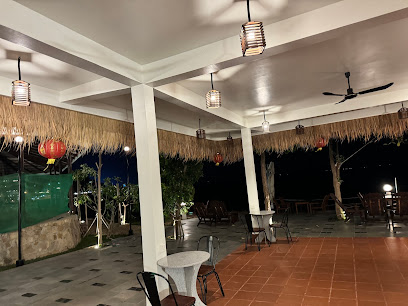
Bamboo Cafe
Experience the authentic flavors of Cambodia at Bamboo Cafe in Krong Kaeb, where local dishes meet a cozy atmosphere.
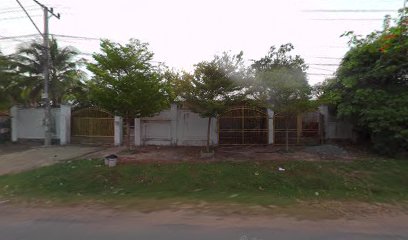
សួន សមុទ្រ KTV
Experience the joy of karaoke at សួន សមុទ្រ KTV in កែបប, where music, laughter, and unforgettable memories await you.
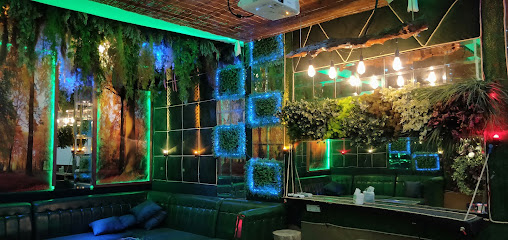
Local Phrases about Kep Province
-
- Helloសួស្តី
[suostei] - Goodbyeលាហើសួស្តី
[lear suostei] - Yesបាទ
[baat] - Noទេ
[te] - Please/You're welcomeសូម
[som] - Thank youអរគុណ
[aokun] - Excuse me/Sorryសុខសប្តាសារ/សុខសប្តស្រល
[sok sabai rai/sok sabai srol] - How are you?អ្នកសុខសប្ត?
[neak sok sabai?] - Fine. And you?សុខសប្តដោយៗៗអ្នក?
[sok sabai doy doy neak?] - Do you speak English?អ្នកនិយាយភាសាអង់គ្លេសបានទេ?
[neak niyay phasa angkleis ban te?] - I don't understandខ្ញុំមិនឃើញ
[knhom min khern]
- Helloសួស្តី
-
- I'd like to see the menu, pleaseខ្ញុំចង់មើលម៉ឺនុយអត្ថបទសូម
[knhom chong meul menu at teat bat som] - I don't eat meatខ្ញុំមិនបានបរិយបាន
[knhom min ban baray ban] - Cheers!ជូស!
[chol] - I would like to pay, pleaseខ្ញុំចង់បង់ប្រាក់សូម
[knhom chong bong braek som]
- I'd like to see the menu, pleaseខ្ញុំចង់មើលម៉ឺនុយអត្ថបទសូម
-
- Help!ជំរុញ!
[chom roh] - Go away!លោកពីជួយ!
[lok pi chuoy] - Call the Police!ហេតុការប្រទេយ!
[het kar prateh] - Call a doctor!ហេតុការវេជ្ជបណ្ឌ!
[het kar vejjabon] - I'm lostខ្ញុំភ្លេច
[knhom plech] - I'm illខ្ញុំជាក់
[knhom jak]
- Help!ជំរុញ!
-
- I'd like to buy...ខ្ញុំចង់ទិញ...
[knhom chong tien...] - I'm just lookingខ្ញុំតែខប់
[knhom tae kop] - How much is it?តើវាតិចម៉េច?
[te veat moc?] - That's too expensiveនេះមិនត្រូវទេ
[neh min trov te] - Can you lower the price?តើអ្នកអាចថយទិកបានទេ?
[te neak ach tay tuk ban te?]
- I'd like to buy...ខ្ញុំចង់ទិញ...
-
- What time is it?ម៉ោងប៉ះណា?
[moeung bahnha?] - It's one o'clockវាគឺម៉ាស?
[veat ke mas?] - Half past (10)កន្សែងនៅលើ (10)
[kansae nai ler (10)] - Morningព្រឹក
[prek] - Afternoonល្ងាច
[langcha] - Eveningល្ងាច
[langcha] - Yesterdayម្សិល
[msul] - Todayថ្ងៃនេះ
[thngai neh] - Tomorrowថ្ងៃស្អែ
[thngai sae] - 1១
[mouy] - 2២
[pii] - 3៣
[bei] - 4៤
[buon] - 5៥
[pram] - 6៦
[pram mui] - 7៧
[pram pii] - 8៨
[pram bei] - 9៩
[pram buon] - 10១០
[dop]
- What time is it?ម៉ោងប៉ះណា?
-
- Where's a/the...?មួយ...នៅណា?
[muoy... nai na?] - What's the address?អាសយដ្ឋមួយ?
[asayat muoy?] - Can you show me (on the map)?តើអ្នកអាចបង្ហាញទៅខ្លួនខ្លះបានទេ?
[te neak ach bonghang tvi klun kloh ban te?] - When's the next (bus)?នៅណាមួយទៅទៅ?
[nai na muoy tvi tvi?] - A ticket (to ....)សំបុត្រមួយ (ទៅ ...)
[sombot muoy (tvi ...)]
- Where's a/the...?មួយ...នៅណា?
History of Kep Province
-
Kep Province traces its roots back to the early 20th century when it was established as a French colonial resort town. Known as Kep-sur-Mer, it attracted wealthy French colonists and Cambodian elite, who built luxurious villas along its picturesque coastline. The architectural remnants of this period can still be seen today, showcasing a blend of French and Khmer influences.
-
During the 1960s, Kep was in its golden age, often compared to the French Riviera. It was a popular getaway for the Cambodian elite and royals, including King Norodom Sihanouk. However, the Khmer Rouge takeover in the 1970s led to the province's decline. Many of the villas were abandoned or destroyed, and Kep became a ghost town.
-
Following the fall of the Khmer Rouge regime, efforts to restore Kep began in the 1990s. While many of the colonial villas remain in ruins, they add to the area's mystique and historical allure. The Cambodian government and private investors have worked to revitalize Kep, focusing on eco-tourism and sustainable development.
-
Kep is not only rich in history but also in natural beauty. Kep National Park, established in 1993, covers over 50 square kilometers and is home to diverse flora and fauna. The park offers hiking trails that lead to breathtaking viewpoints, inviting travelers to explore its lush landscapes and serene environment.
-
One of Kep's most iconic landmarks is the Crab Market, locally known as 'Psar Kdam.' This bustling market is a cultural treasure trove where visitors can experience the local way of life. Fresh seafood, especially the famous Kep blue crabs, is sold directly by fishermen. The market is a testament to Kep's enduring connection to the sea and its fishing heritage.
-
Phnom Voar, a mountain in Kep Province, holds significant historical importance. It served as a Khmer Rouge stronghold during the Cambodian Civil War. Today, visitors can hike to the summit and learn about its tumultuous past while enjoying panoramic views of the surrounding countryside.
-
Kep is home to several pagodas and spiritual sites that reflect its cultural and religious heritage. Wat Samathi, located on a hill, offers a peaceful retreat for meditation and reflection. The pagoda complex includes beautiful gardens and statues, providing insights into Cambodian Buddhism and local traditions.
Kep Province Essentials
-
Kep Province is located in southern Cambodia, approximately 170 kilometers from Phnom Penh, the capital city. The most convenient way to get to Kep is by road. You can take a taxi, bus, or minivan from Phnom Penh. The journey usually takes around 3 to 4 hours. Buses and minivans depart frequently from the central bus stations in Phnom Penh. Alternatively, you can hire a private car for a more comfortable journey.
-
Within Kep Province, transportation options include tuk-tuks, motorbike taxis, and bicycles. Tuk-tuks and motorbike taxis are readily available and can be hired for short trips or day tours. Bicycle rentals are popular among tourists who want to explore the area at a leisurely pace. For longer trips, car rentals are available, but driving conditions can be challenging due to narrow roads and varying road conditions.
-
The official currency in Cambodia is the Cambodian Riel (KHR), but the US Dollar (USD) is widely accepted and often preferred for larger transactions. Credit cards are accepted in some hotels and restaurants, but it is advisable to carry cash, especially for small purchases and in rural areas. ATMs are available in Kep, but it is wise to withdraw sufficient cash in Phnom Penh before traveling.
-
Kep is generally a safe destination for tourists, but it is important to take standard precautions. Avoid walking alone at night in isolated areas and keep an eye on your belongings in crowded places. There are no specific high-crime areas targeting tourists in Kep, but it is always best to stay vigilant. Additionally, be cautious when swimming in the sea, as there may be strong currents.
-
In case of emergency, dial 117 for police assistance or 119 for medical emergencies. The nearest hospital is located in Kampot, approximately 25 kilometers away. It is recommended to have travel insurance that covers medical emergencies. For minor health issues, there are pharmacies in Kep where you can purchase over-the-counter medications.
-
Fashion: Do dress modestly, especially when visiting religious sites. Avoid wearing revealing clothing. Religion: Do respect local customs and traditions. Remove your shoes and cover your shoulders and knees when entering temples. Public Transport: Do be respectful and give up your seat to elderly passengers. Don't eat or drink on public transport. Greetings: Do greet people with a friendly smile and a slight bow. A traditional greeting involves placing your hands together in a prayer-like gesture. Eating & Drinking: Do try local delicacies and accept food offerings graciously. Don't refuse hospitality, as it is considered impolite.
-
To experience Kep Province like a local, visit the Kep Crab Market, where you can buy fresh seafood and enjoy it at nearby restaurants. Engage with locals, as they are often friendly and willing to share stories about the area's history and culture. Don't miss a visit to Kep National Park, which offers scenic hiking trails and stunning views of the coastline. For a unique experience, take a boat trip to Rabbit Island (Koh Tonsay) for a day of relaxation and exploration.
Trending Landmarks in Kep Province
-
Kep Crab Market
-
Krung Kep Blue Swimmer Crab Statue
-
White Lady Statue
-
Kep Beach
-
Kep City
-
Kep National Park
-
Knai Bang Chatt Resort in Kep
-
ឆ្នេរអង្កោល - Angkol beach
-
Wat Samathi Pagoda
-
Pantai Kep
-
King Sihanouk's Seaside Palace
-
Khmer House Bangalow
-
ផ្លូវថ្មីកាត់ទៅកែប
-
Kep Butterfly Garden
-
O'Krosar Community
Nearby Cities to Kep Province
-
Things To Do in Kampot
-
Things To Do in Phu Quoc
-
Things To Do in Sihanoukville
-
Things To Do in Koh Rong
-
Things To Do in Phnom Penh
-
Things To Do in Can Tho
-
Things To Do in Koh Kong
-
Things To Do in Ho Chi Minh City
-
Things To Do in Kratie
-
Things To Do in Trat
-
Things To Do in Vung Tau
-
Things To Do in Battambang
-
Things To Do in Siem Reap
-
Things To Do in Rayong
-
Things To Do in Phan Thiet










